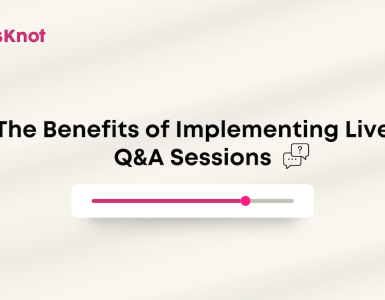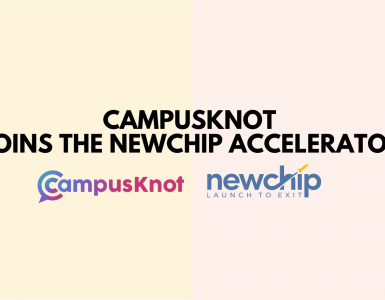What is student engagement? Moreover, why is it such a buzzword nowadays?
First, let’s define what we mean when we use the term “student engagement.” According to The Glossary of Education Reform, student engagement refers to the degree of attention, curiosity, interest, optimism, and passion that students show when they are learning or being taught, which extends to the level of motivation they have to learn progress in their education.
Student engagement has become the ultimate objective in the classroom.
As a matter of fact, classroom engagement has been a “hot topic” since 1996, when the term was first mentioned. 20 years later, we continue to research for the perfect answer to successful student engagement.
[taq]Engagement has everything to do with a student having an active role in the learning environment and nothing to do with just being the product of it.[/taq]
In a traditional classroom setting, a professor’s job was focused on just lecturing and answering questions. In the 21st-century classroom, a professor serves as a facilitator rather than a lecturer, and the students take an active role in learning.
Successful student engagement connects not only the instructor to the students but also the students to their peers. According to Phil Schlecty, founder and CEO of the Center for Leadership in School Reform, students who are more likely to be engaged had three characteristics in common:
(1) they are attracted to their work
(2) they persist in their work despite challenges and obstacles
(3) they take visible delight in accomplishing their tasks.
However, how do we achieve all of those? How do we make a student engage with a topic? Engagement numbers fall heavily under a professor’s approach to a subject, but the student is equally responsible for responding to a professor’s teaching strategy.
The modern student consumes and distributes information differently, making old engagement techniques almost impossible to implement.
The first problem many educators face is the decrease in attention span and the increase of distractions within the classroom since cell phones made their debut—the second problem is how the content is delivered. Instead of banning cell phones and technology in the classroom, what if they became tools rather than distractions? Would engagement numbers be any different?
The reality is the first-mobile generation is here, and there is no turning back. Schools that are currently implementing mobile-friendly technologies will stand out, gaining a competitive edge to attract more prospective students, turn them into applicants and retain them throughout the entire student lifecycle.
Educators are finding more innovative ways to engage students in the classroom. Every semester, more instructors find more value in technology, especially those that cater to the needs of solving the engagement problem.
In a survey conducted with over 4,000 professors, 63 percent of educators admitted being drawn to adopting technology in their classroom because students are more likely to stay focused and invest effort in retaining the material. Despite all their efforts to introduce innovative technologies, only 38 percent of professors are involved in the decision-making process.
The ultimate solution to increase engagement is through technology, but why is it difficult to implement? Here is where the generational gap begins.
Higher education is a very complex world with a very hierarchical ladder. To enforce any topic or technology in higher education, it must pass through the decision-makers hands. Let’s breakdown the ladder of the education hierarchy:
- First, the decision-makers, typically baby boomers between the ages of 54-60.
- Second, the educators, generation X between the ages of 40-55.
- Last, the end-user or student, typically within generation Y and Z.
Let’s review some generational characteristics:
- The decision-makers, best known as baby boomers, make up 45% of the workforce. They live to work, and their views on technology are assimilated; they value teamwork and focus on working towards a task and seeing the results of their work.
- The educators, or Generation X, work to live and make up 40% of the workforce. They view technology as acquired, and they are task-oriented and eager to see the results of their labor.
- The end-user, best known as millennials or Generation Y/Z, constitute 10% of the workforce and solemnly work to find out “what’s next?” Their views on technology as integral and want to see the results of their labor “now!”
Here is where the engagement gap begins. Technology or teaching methods are being set by a generation whose views on technology are very foreign. Although decision-makers’ eagerness to solve the engagement problem is evident, are they making the right choice when choosing a product that serves the students’ needs?
A study conducted by The74 found that decision-makers gather data from their fellow decision-makers before implementing new technology. Most of the time, this information is produced locally and tends to temporarily fix a problem. It is also important to recognize that some of the technologies commonly being implemented are not built to address the engagement needs of Gen X and Gen Y but rather managing a course.
The software programs adopted in many institutions are expensive, outdated, not user-friendly, and require professors’ training time. Yet, it does not allow decision-makers or educators to actually measure their student’s performance in the classroom.
The LMS market continues to decrease in the number of users. Why is this? They do not solve the problem of the end-users (Gen. Y and Z) who believe that because of technology, they can work flexibly anytime, anyplace, and that they should be evaluated on work product — not how, when, or where they get it done.
Education has become more than just “managing” a student’s behavior during a class; education slowly becomes innovative and engaging because of technology.
If technology is the solution and students are the future, why are we leaving the decision-making process solemnly to decision-makers when professors are the ones who day-to-day address the students’ needs?

Millennials are a generation who spend 5.4 hours a day on social media and are 10x more likely to participate in discussions and dialogues on social media to learn. The majority of LMS’s have a “discussion board” type feature.
For a generation so impatient, measuring the outcome of their work is very important. The technologies implemented in the classrooms are not doing that for them.
College tuition and fees are increasing rapidly every year, and decision-makers are signing contracts with LMS companies charging thousands of dollars to implement impractical technologies.
At the end of the day, the problem continues: professors are having a hard time engaging and increasing retention in classrooms, and the end-user is more disconnected from the material than ever before.
If increasing student engagement is vital for an institution, then a platform’s functionality is not enough. High-quality user experience and relatable technologies should be implemented.
The solution is not far — new trends and technologies continue to increase because of the lack of solutions the current management systems offer. Social-learning management systems are a whole new realm.
This new industry gives the end-user and the instructors immediate feedback on assignments, interactive, real-time wall feeds to discuss any topic during a lecture, online office hours, and most importantly, the ability to track engagement and retention numbers end of every lecture. Accomplishing student engagement should not be expensive, outdated, or take thousands of training hours.





604 comments